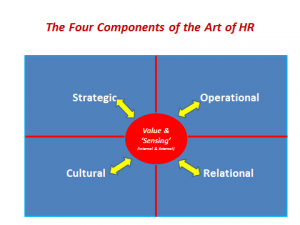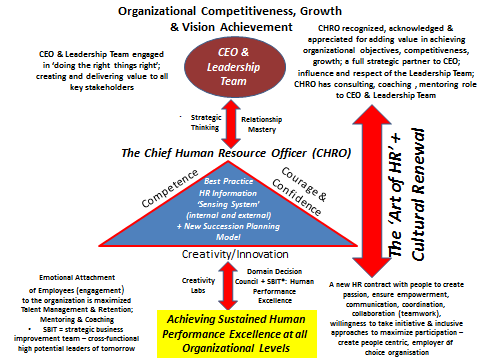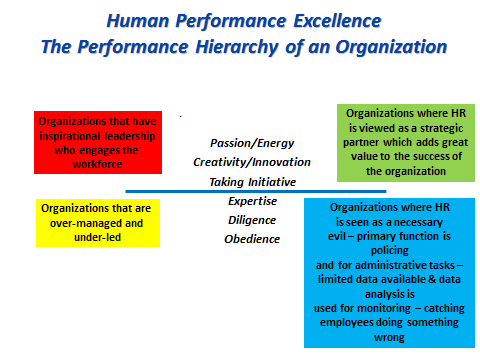Editor's Note: Take a look at our featured best practice, McKinsey Talent-to-Value Framework (230-slide PowerPoint presentation). Curated by McKinsey-trained Executives Unlocking Business Excellence: The McKinsey Talent-to-Value Framework Toolkit In the dynamic world of modern business, staying ahead of the competition means maximizing the potential of your most critical asset – your people. The **McKinsey [read more]
The Journey from the Age of the Tool to the Present (Part 6)
Also, if you are interested in becoming an expert on Human Resource Management (HRM), take a look at Flevy's Human Resource Management (HRM) Frameworks offering here. This is a curated collection of best practice frameworks based on the thought leadership of leading consulting firms, academics, and recognized subject matter experts. By learning and applying these concepts, you can you stay ahead of the curve. Full details here.
* * * *
Editor’s Note: The Journey from the Age of the Tool to the Present is a 7-part series, tracing the journey humanity has taken from 2500 BC to modern times on the progress of Human Resources. This is a very comprehensive narrative that touches upon numerous management philosophies and concepts. To read the full series, take a look at the author’s profile page found here.
* * * *
While the above basically ‘hits the target’, there are a number of issues that remain unresolved based upon my 42 years of experience. A few of these were also reinforced in Jon Ingham’s ‘Art of HR survey’ results. These are outlined below:
- While mentioned above, it bears repeating that HR Professionals have lacked and continue to lack the broader business acumen and capability to think and act strategically. This has limited their acceptance into the leadership team as a full member – a true strategic partner.
- In 1995 I was doing a Seminar in New York City for the Conference Board. The delegates were HR Professional – VP’s, Directors and Heads of HR. The issues we discussed during that seminar 20 years ago, in many cases and within many organisations, have not changed as dramatically as they should have and so even today too many organisations still operate in the relative ‘dark ages’ with CEO’s and leadership teams often still maintaining their myopic view of HR and needing enlightenment but not seeking it or desiring it – those old paradigms still not shifted or remaining undying despite the research from Ulrich and others such as the ‘Service-Profit Chain’ by Heskett et all at Harvard written in 1996!
- To a certain extent one could say that if we used Peter Senge’s four levels of a learning organisation, many CEO’s and leadership teams still fall into the category of ‘unconscious incompetence’ – they don’t know what they don’t know about HR and in many cases are not the least motivated to find out as their hubris/arrogance often gets in the way.
- These CEO’s and leadership teams would most likely fall into Jim Collins (Good to Great) Category’s 1-2 with some spill over into category 3 of his five levels of leadership.
- As a result, the CEOs and leadership teams of organisations too often stereotype HR professionals as being ‘management’ as opposed to ‘leadership.’
- HR Professionals often lack the necessary competencies to fully understand and exploit or execute approaches that stimulate and focus creativity (e.g., DeBono’s Six Hats) or innovation among the workforce in a direction consistent with senior management’s objectives, critical success factors, vision or in achieving and maintaining competitive advantage.
- Often too, HR Professionals have been stereotyped by the workforce as more of a necessary evil or even policeman rather than a valuable resource, solutions provider or trusted advisor therefore limiting their impact. Thus often, HR Professionals are not able to act in a way that inspires or engages the workforce – a key to realising the true ‘Art of HR.’
- Going one step further, it is clear that the CEO and leadership team of most organisations also do not have the required knowledge and skills to inspire and engage the workforce as they should. It is here too that HR Professionals must reach a level of comfort and competence where they are not just seen as a valuable resource, trusted advisor, solutions provider and consultant to the CEO and leadership team, but actually have that reputation throughout their organisation so they can help build that knowledge and those skills among the leadership team.
- Too often HR Professionals are timid or anxious/afraid to ‘experiment’ for fear of making a mistake and being ‘beaten up’ by the CEO and leadership team or to ‘fight for what is right and ensure creation of a more employee – centric organisation’ or they give up too easily. This is made worse because many HR Professionals, as stated above, still lack the knowledge and skills to be a true driver of creativity and innovation and to show that what they can achieve links to leadership’s objectives including achieving and maintaining competitive advantage.
- HR Professionals MUST clearly and continuously show the CEO and leadership team – as well as the workforce, that they can not only create value (benefits), but deliver value to all key stakeholders – leadership team, employees and customers to mention a few. For surely, if the efforts of the HR Professional do not ultimately impact the customer or end user of an organisation, it has not been truly successful. Those thousands of interactions on the telephone, by emails, texts or in-person interactions that take place every day between the company and its customers must be positively impacted by what the HR Professionals are able to achieve through leadership and through the workforce. In that way, more ‘memorable experiences’ or ‘wow’ moments between employees and customers will be created every day enhancing their loyalty and the company’s competitive advantage. It is critical that HR demonstrate that it can create and deliver value to all key stakeholders of the organisation. They should be trusted enough and their support sought by the CEO and leadership Team to coach them, guide them, consult to them.
It is clear that transformation can only occur if the CEO is ‘on-board’ such as discussed in the Post by my friend Ben Whitter of Nottingham University in the UK.
The following diagram attempts to summarize all the above points:
One question which I believe is ‘fair game’ is. ‘Who is accountable for the organisation’s culture?’ How do you really create a people-centric organisation and is that consistent with or contrary to creating a customer –centric organisation? Can you have both? Why or why not?
Looking at the above chart you see ‘creativity labs’. You know and I know that today if you told each member of the Management Committee including the CEO that they had to start and run their own creativity lab with specific objectives and the bonuses would be given based on performance, it is unlikely any of them could do it. Sad.
Possibly the Chief Human Resource Officer should be called the Chief Creativity Officer or Chief Culture Officer. Possibly the term ‘human resources’ has passed it ‘buy/sell date?
Here’s another summary chart which might help tell the story:
This chart indicates the progression that needs to be made to reach human performance excellence in your organisation. Where is your organisation in this progression today? How do you move it forward? What is the cost of lost opportunity of not doing it? What is the specific role and responsibility – action plan of HR to ensure this progression toward an ‘employer of choice’ or ‘people-centric’ organisation is happening and will be successful?

Possibly HR needs to have three components: strategic, operational and sensing while creating and delivering value. The ‘culture component’ spans both strategic as well as operational. As I have seen in my 42 years of work around the world, the culture of an organisation can either be the biggest enabler or biggest inhibitor of its future success. It must be right and someone must be accountable.
The sensing component means that pulsing surveys of employee feedback on issues like ‘how does it feel to work here’ and many others, use of advanced analytical techniques such as Gavaghi or Sentiment Analysis from the University of Lund are essential. HR needs to be on the leading edge of detecting changing employee requirements, levels of commitment and engagement, emerging trends, be able to look not only by level and function of employees, but have insight into the uniqueness which diversity brings – not just gender or cultural – across borders, but generational – Baby Boomers vs. Millennials/Gen X vs. Generation Y or Z and more. Being able to distinguish easily local versus holistic human resource issues is critical especially in global organizations. HR professionals need to possess ‘relationship mastery’ to be truly successful.
I have found that establishing Decision Domain Councils can be incredibly helpful. Read the final part of the series (part 7) here.

Want to Achieve Excellence in Human Resource Management (HRM)?
Gain the knowledge and develop the expertise to become an expert in Human Resource Management (HRM). Our frameworks are based on the thought leadership of leading consulting firms, academics, and recognized subject matter experts. Click here for full details.
The purpose of Human Resources (HR) is to ensure our organization achieves success through our people. Without the right people in place—at all levels of the organization—we will never be able to execute our Strategy effectively.
This begs the question: Does your organization view HR as a support function or a strategic one? Research shows leading organizations leverage HR as a strategic function, one that both supports and drives the organization's Strategy. In fact, having strong HRM capabilities is a source of Competitive Advantage.
This has never been more true than right now in the Digital Age, as organizations must compete for specialized talent to drive forward their Digital Transformation Strategies. Beyond just hiring and selection, HR also plays the critical role in retaining talent—by keeping people engaged, motivated, and happy.
Learn about our Human Resource Management (HRM) Best Practice Frameworks here.
Readers of This Article Are Interested in These Resources

|
|
102-slide PowerPoint presentation
|
|
193-page Word document
| |||
About Dr. Ted Marra
Dr. Ted Marra is a strategic facilitator, organizational mentor and writer. He has lectured in MBA/EMBA programmes at universities in Boston, Detroit, the UK, Switzerland and Croatia. He is now a Member of the Board of MAX/Knowledge Now, a global learning organisation. He is also Sr. Partner for Insights Paradigm, a strategic advisory organization in Dubai, UAE. You can find Ted on LinkedIn here.
Top 10 Recommended Documents on Human Resources
» View more resources Human Resources here.
» View the Top 100 Best Practices on Flevy.















